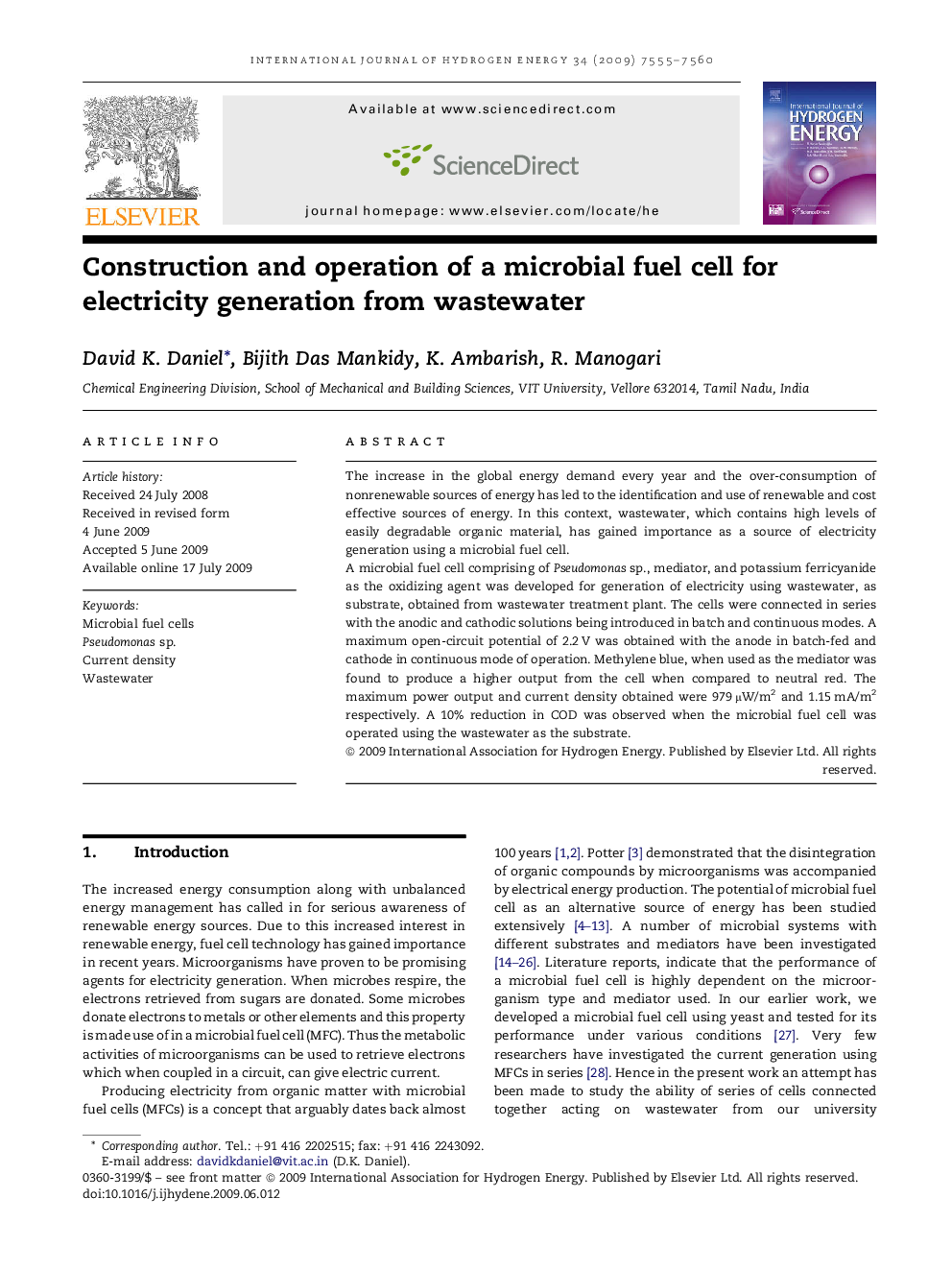| Article ID | Journal | Published Year | Pages | File Type |
|---|---|---|---|---|
| 1281148 | International Journal of Hydrogen Energy | 2009 | 6 Pages |
The increase in the global energy demand every year and the over-consumption of nonrenewable sources of energy has led to the identification and use of renewable and cost effective sources of energy. In this context, wastewater, which contains high levels of easily degradable organic material, has gained importance as a source of electricity generation using a microbial fuel cell.A microbial fuel cell comprising of Pseudomonas sp., mediator, and potassium ferricyanide as the oxidizing agent was developed for generation of electricity using wastewater, as substrate, obtained from wastewater treatment plant. The cells were connected in series with the anodic and cathodic solutions being introduced in batch and continuous modes. A maximum open-circuit potential of 2.2 V was obtained with the anode in batch-fed and cathode in continuous mode of operation. Methylene blue, when used as the mediator was found to produce a higher output from the cell when compared to neutral red. The maximum power output and current density obtained were 979 μW/m2 and 1.15 mA/m2 respectively. A 10% reduction in COD was observed when the microbial fuel cell was operated using the wastewater as the substrate.
